Visiting Thailand’s Death Railway and Hellfire Pass, built during World War II
A popular pilgrimage is Thailand’s ‘Death Railway’ and the Hellfire Pass rail cutting.

‘Death Railway’ is the name that was given to the rail line built during World War II — the 420 kilometre Thailand-Burma Railway line. The railway infrastructure was built by Japanese’s prisoners of war and forced Asian labourers. It’s reported that more than 250,000 people helped build the rail line, and more than 100,000 people lost their lives due to the brutal conditions created by the Japanese.

Dotted along the Thailand-Burma Railway line are historical points that are visited by people interested in World War II history. The southern part of the rail line, 130km from Bangkok to the west, is still in operation today — it terminates at Nam Tok.

Historical sites along the Thailand-Burma Railway line
In this article I’ll look at the most popular places to visit along Death Railway, and one that is not so popular.

If you’re visiting the region, the best place to base yourself is at Kanchanaburi. This is a large city located about 140kms west of Bangkok — it’s a 2 hour 17 minute drive, or about 3 hours via train. Kanchanaburi is the home of the River Kwai Bridge — it’s a rail-only bridge that was bombed several times during World War II.

Kanchanaburi has lots of shops, restaurants and easy access to taxis & hire cars. It also is the home of two war museums and two World War II war graves operated by the Commonwealth War Graves Commission. And it’s a great spot to use as your base in this region — we stayed in the town for 4 days.
Kanchanaburi tropical weather and insects
The Kanchanaburi mountain region has a tropical weather environment. This means that it‘s a hot and sweaty place — and you should apply insect repellent — particularly near the jungle environment at Hellfire Pass. We found that the hottest part of the day was between 12:30pm and 4pm — and many locals were smarter than us, and stayed out of the sun during that part of the day.

Rainfall is higher in the months of May, July, September and October. The drier months are December, January and February.
Getting to Kanchanaburi by train
We caught the weekend excursion train, Excursion Train 909, to Kanchanaburi from Bangkok Railway Station, unofficially known as Hua Lamphong station.



This rail service had a First Class car with air conditioning. There are regular services to and from Bangkok to Kanchanaburi, but these rail cars don’t have any air conditioning — and be aware that it’s a hot and humid trip — and it’s dusty in some parts.



The weekend excursion train to Kanchanaburi travels all the way to a popular waterfall that the Thailand-Burma Railway used to travel over — the Sai Yok Yai Waterfall in the Sai Yok District.
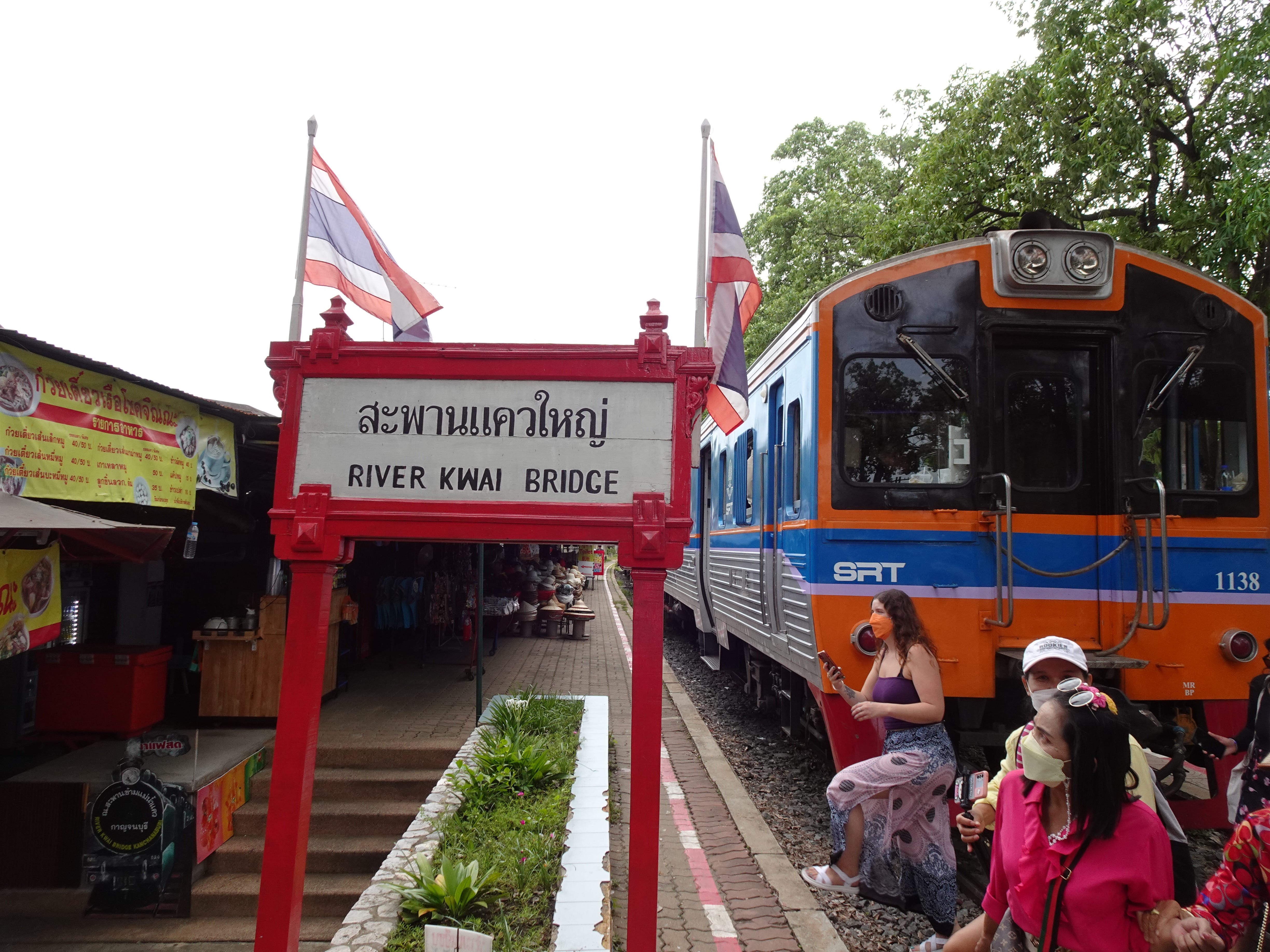

The weekend excursion train travels over the famous section of track near Tham Krasae station in Sai Yok and returns to Bangkok on the same day — and, on the return journey we asked the train guard to stop at Kanchanaburi to let us get off for a 4-day vacation.
If you’re planning on catching the weekend excursion train, it’s best to book here.
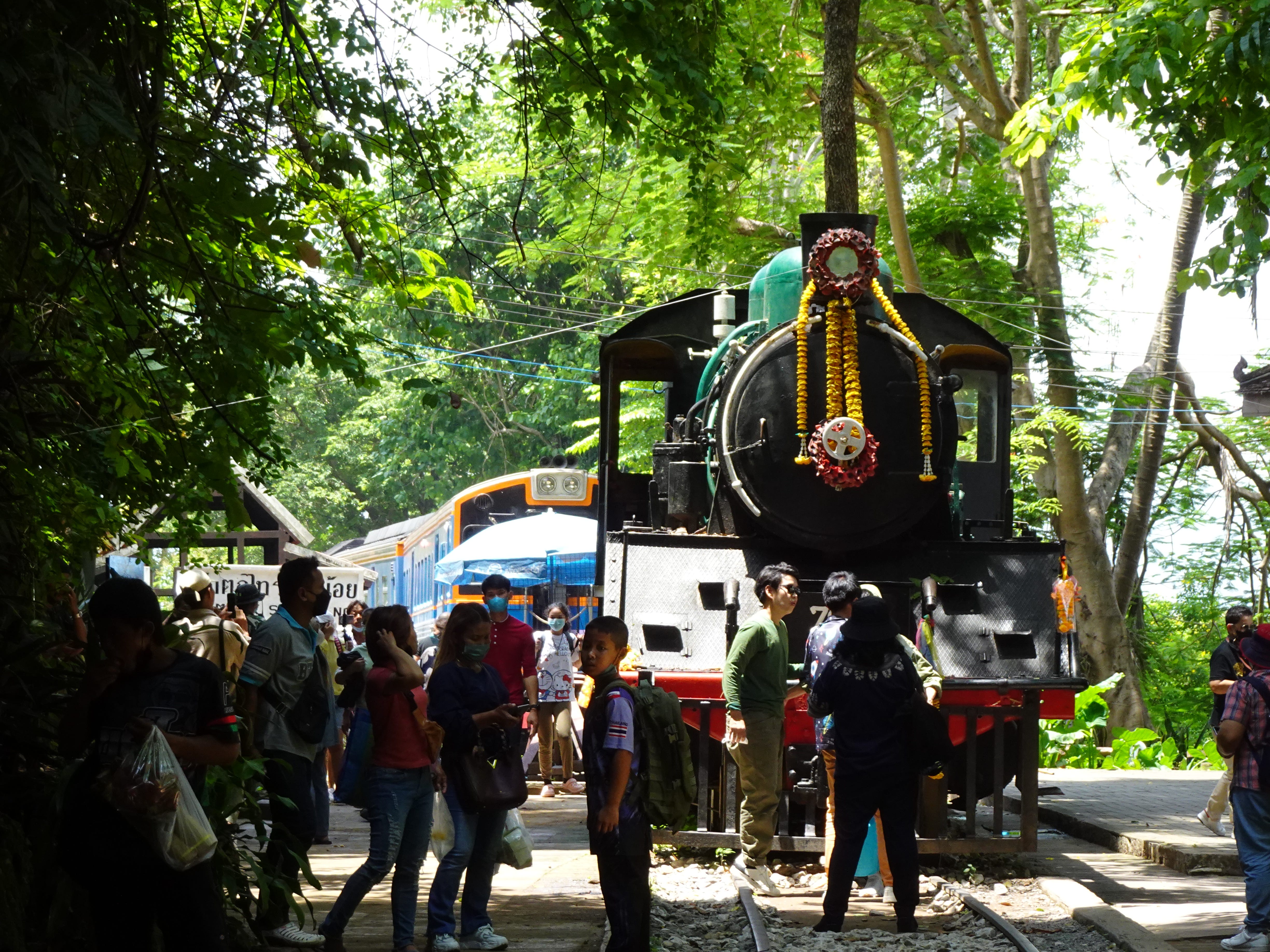

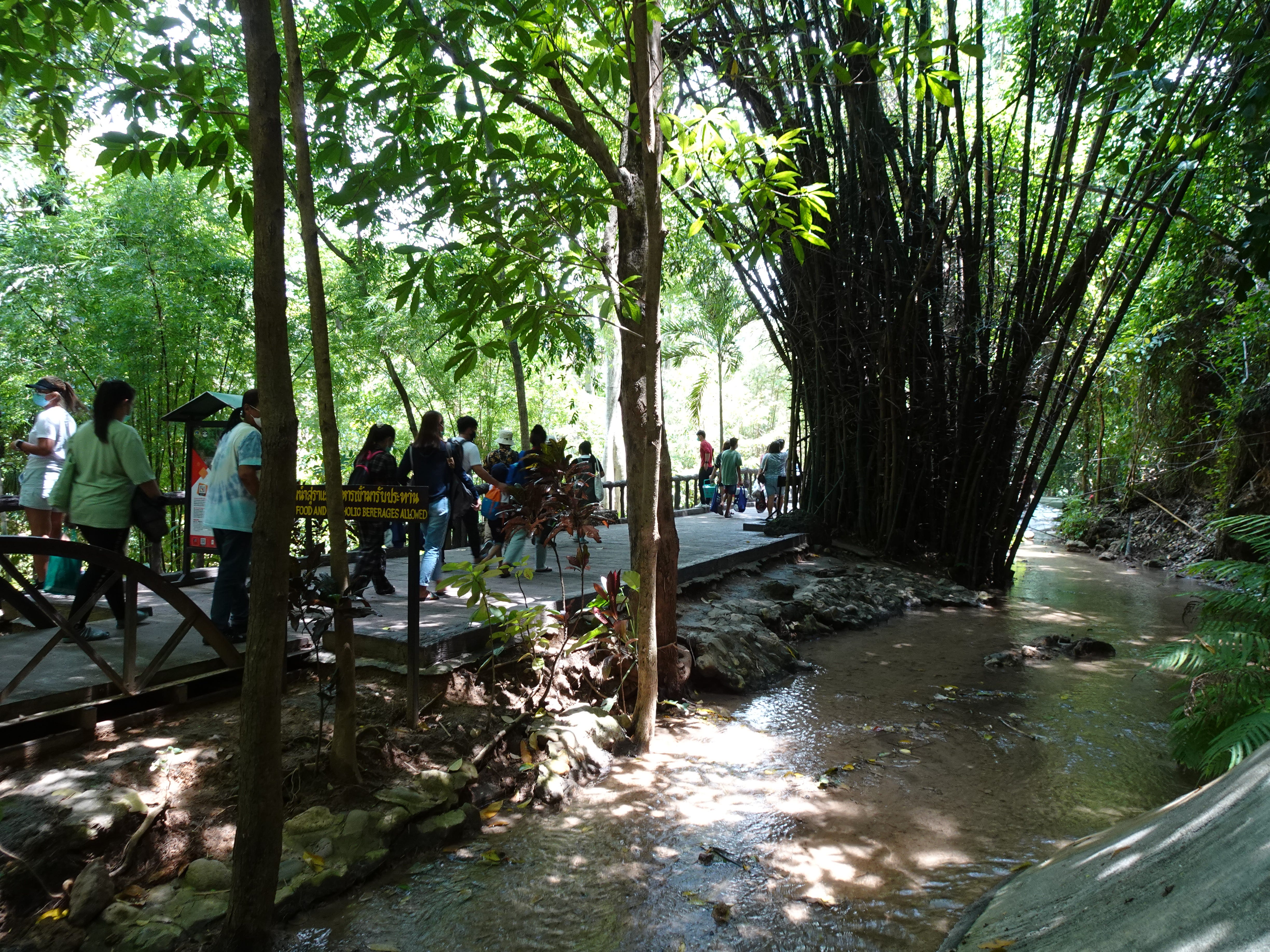
Things to see when you’re in Kanchanaburi
The Kanchanaburi War Cemetery
There are two World War II grave sites in Kanchanaburi — both are operated by Commonwealth War Graves Commission.



The Kanchanaburi War Cemetery has the grave sites of prisoners of war from Australia, Britain, India, Canada and the Netherlands.


In the months after the second world war ended, the Commonwealth War Graves Commission formed the War Graves Relocation Party. And it was their job to find every grave site alongside the Thailand-Burma Railway line, and relocate the remains to a central war grave site.
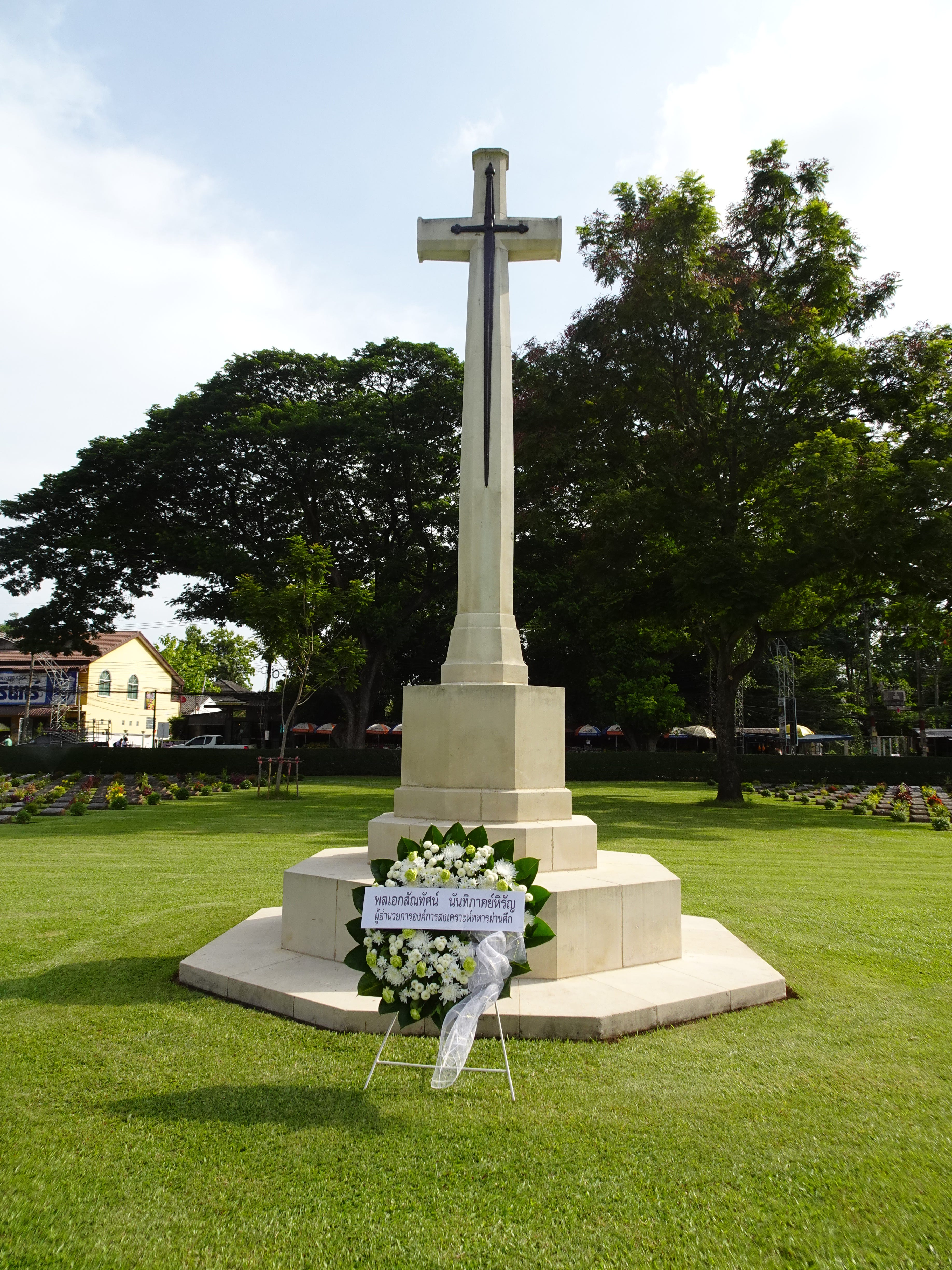


The survey by the War Graves Relocation Party found 10,549 graves in 144 cemeteries along the rail line.


There are 5,085 Commonwealth casualties of World War II buried or commemorated at the Kanchanaburi War Cemetery, and 1,896 Dutch war graves and 1 non-war grave.
The Chungkai War Cemetery
The other grave site operated by the Commonwealth War Graves Commission in Kanchanaburi is the Chungkai War Cemetery. During the war, men who died at the hospital next door were buried at this cemetery and the War Graves Relocation Party decided that the facility was so well looked that the graves did not need to be moved to the newly created war cemetery that was being created closer to the town.

This explains why there are two Commonwealth war grave sites in Kanchanaburi.



There are 1,426 Commonwealth and 313 Dutch burials at the Chungkai War Cemetery. A helpful groundskeeper told us that there weren’t many Australian prisoners buried at this site.


The Death Railway Museum and Research Centre
The Death Railway Museum and Research Centre was founded by Queensland man Rod Beattie in 2003 and is the best museum for credible information about the construction of the Thailand-Burma Railway line.
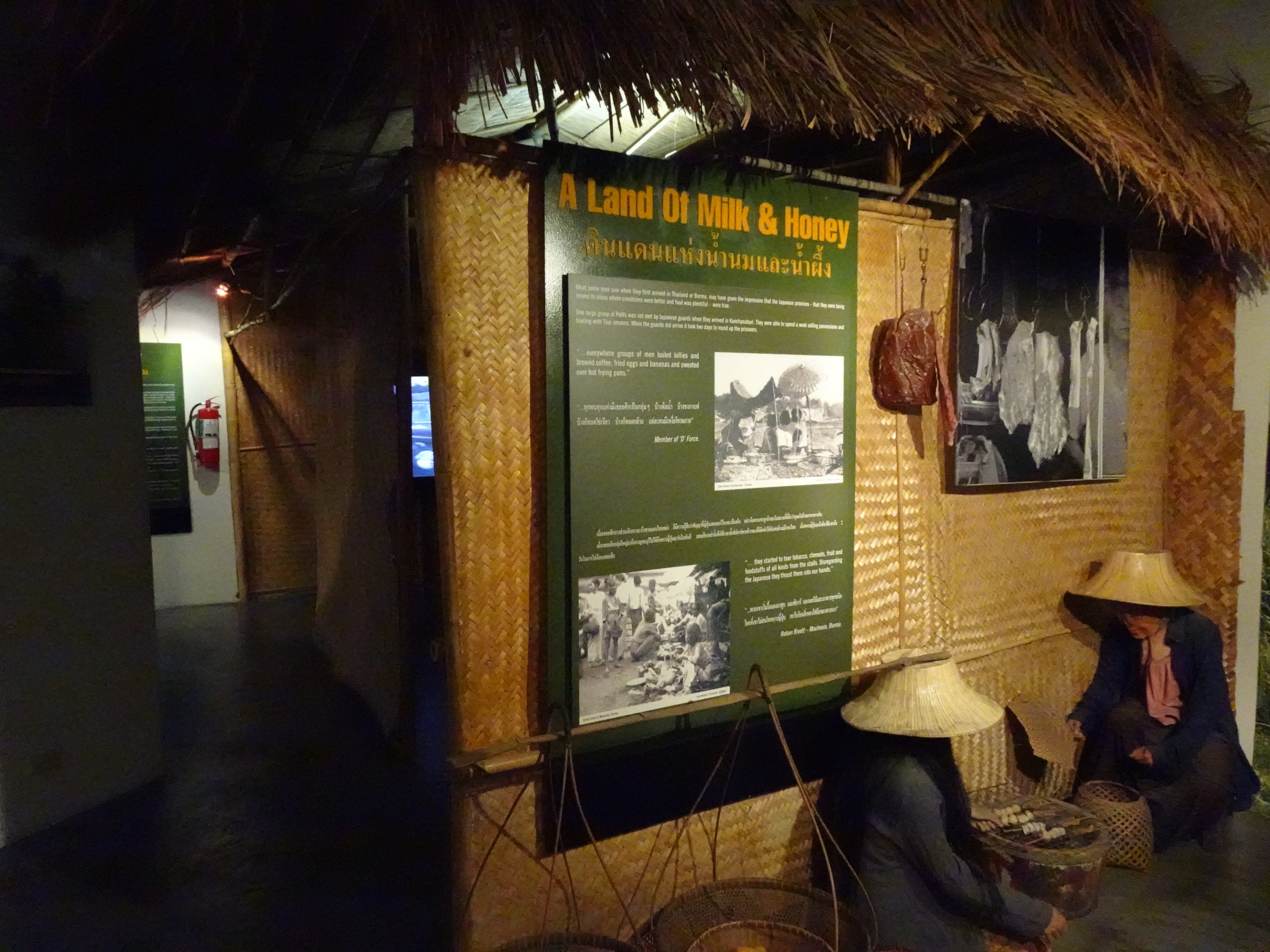


Rod Beattie’s bio reveals his excellent credentials for the museum. He’s a master gemstone cutter and first visited the region in 1989 for work. He once owned the land where British prisoners of war were based — the Hintok River Camp — and, according to signage inside the camp’s museum, Rod found World War II items around the current location of the Hintok River Camp. Rod cleared the former land around the railway line from Hellfire Pass to Compressor Cutting — an area that is now walked daily by pilgrims. He was also the manager of the Commonwealth War Graves Commission’s cemeteries in Thailand and a project manager of the Australian Government’s Hellfire Pass memorial. This background of Rod’s has resulted in an amazingly credible war museum in Kanchanaburi that is still being added to nowadays.

Inside the Death Railway Museum, you’ll read stories that you won’t find online about World War II in this part of Thailand.


Titled ‘The Final Raid’, Canada’s 101 Squadron contributed to the exhibition with specific details of how 26 Royal Air Force B-24 Liberators flew from an airfield in India on 24th June 1945 to the what is now known as the River Kwai to drop bombs on the railway bridge and foot bridge. “F/Lt Borthwick’s aircraft scored a direct hit by Liberator EW173, skippered by New Zealand P/O Johnny Haycock. In all, three spans of the main bridge were destroyed. The focus turned to the wooden bypass bridge, where two gaps were blown. While the steel bridge was not repaired until post-war, POW’s (sic) were forced to repair the wooden bridge which remained in use until 1947.”

Death Railway Museum and Research Centre admission is very cheap. The museum is located across the road from Kanchanaburi War Cemetery.
The JEATH War Museum
The JEATH War Museum is located not far from River Kwai Bridge. This museum appears to have been created by locals from Kanchanaburi, with some help from the Japanese.

The museum is poorly maintained and, on some occasions, recounts some poorly-written stories from World War II.



Most of the exhibits in the museum have signage written in Thai and Japanese — not all of the wording at each exhibition is translated into English.


Inside the JEATH War Museum you’ll find a large steam train engine, draped in a Japanese flag.

Dozens of guns operated by the Japanese Army are on display at the museum.
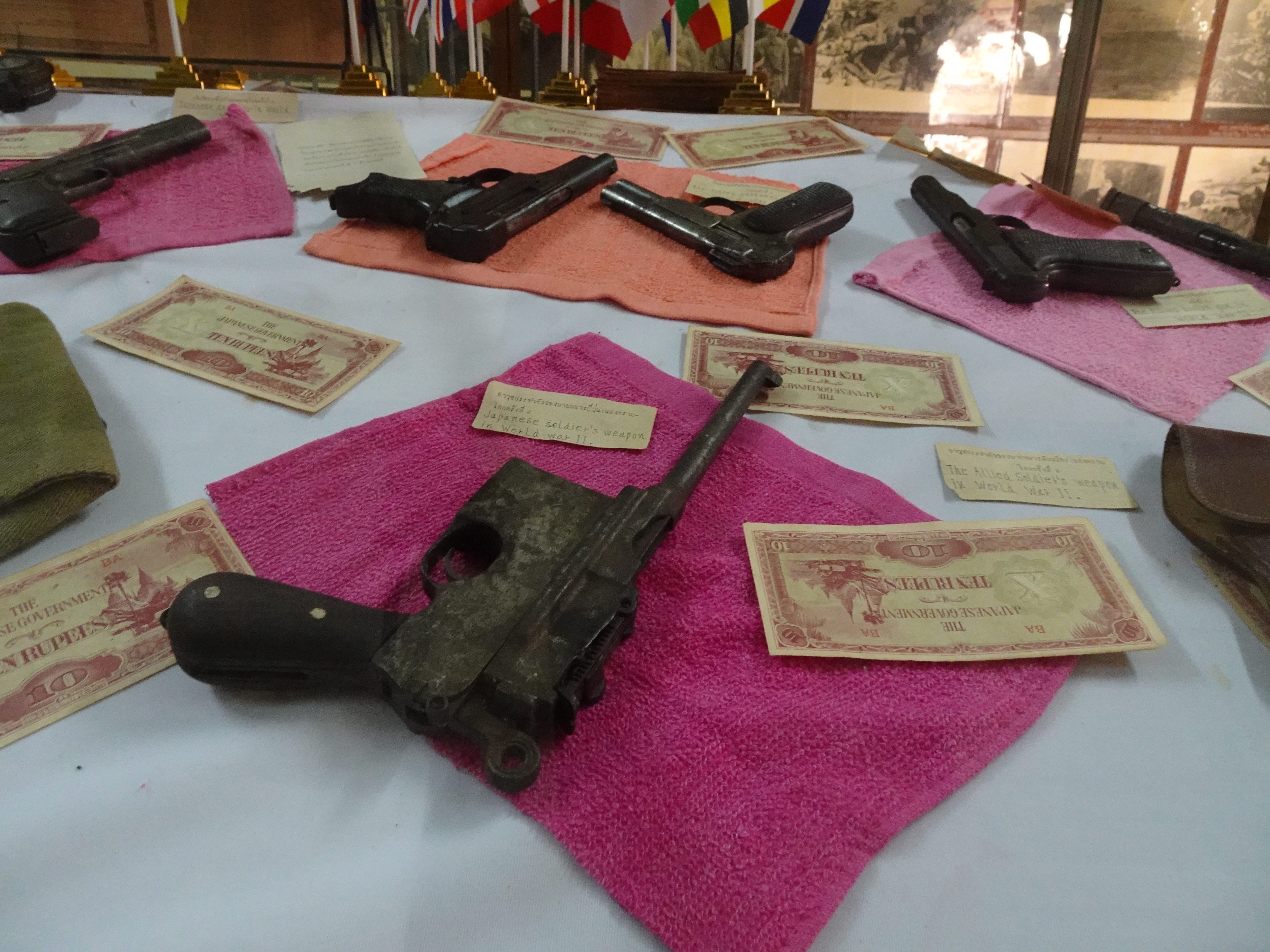
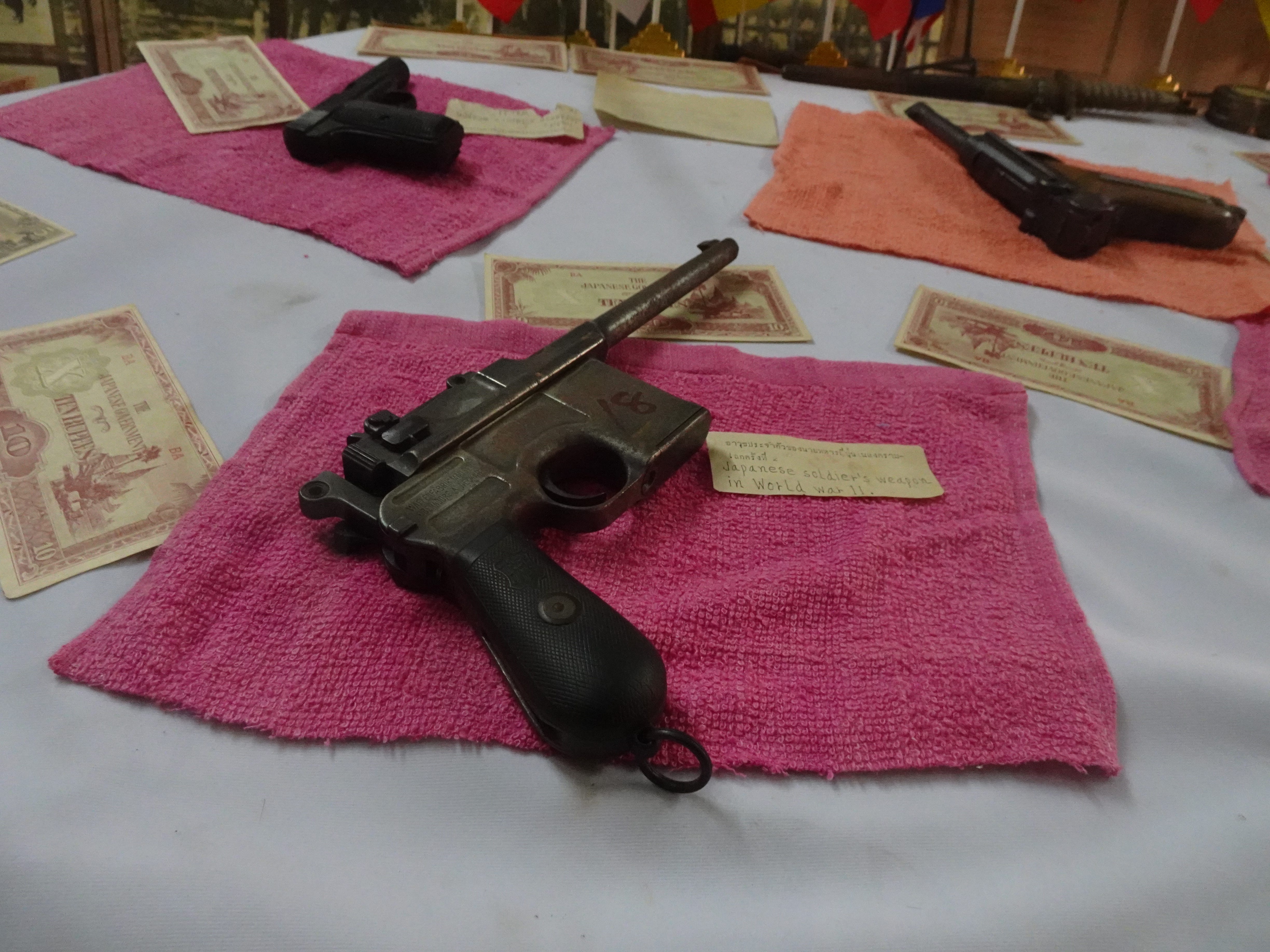

The southern end of the wooden footbridge that crossed the river during World War II is still located where the museum is now.


Several metres of the footbridge can be found downstairs at the JEATH War Museum.
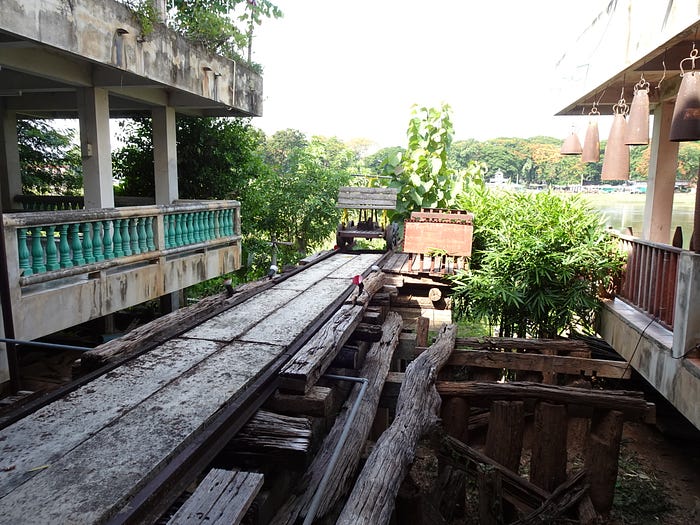
Steam trains near River Kwai Bridge’s train station
Two World War II steam trains and a Japanese ‘truck train’ that were used on the Thailand-Burma Railway line can be found about 300 metres south of the River Kwai Bridge.


According to the Thai sign, these items were placed at the location in 1977 by people who were involved in the rail line during World War II and people who are rail enthusiasts. The sign is also translated into Japanese.
World War II places to visit in Kanchanaburi Province
76 kilometres northwest of the the city of Kanchanaburi is a section of the Thailand-Burma Railway line called the ‘Hellfire Pass.’

The Hellfire Pass section of the Burma–Thailand Railway is a dramatic rail cutting that cost the lives of at least 700 Allied prisoners of war — including 69 beaten to death by Japanese engineers or Korean guards.
Hellfire Pass is also known as the Konyu Cutting.
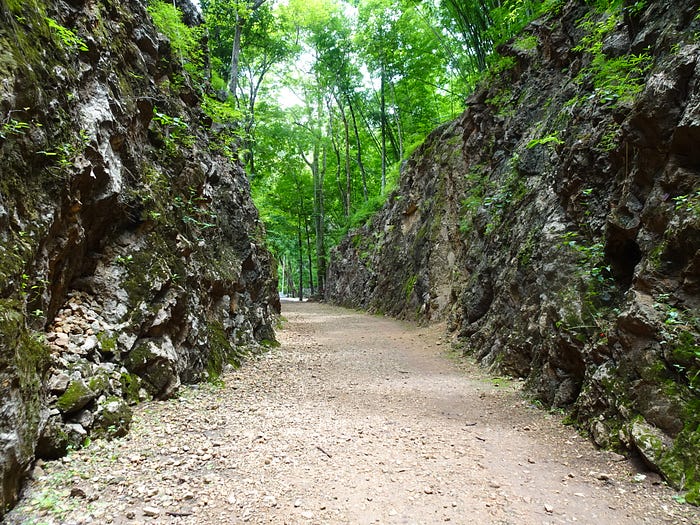
The rail line no longer operates along this corridor — instead the Australian Government, in partnership with the Thailand Government, has established an excellent interpretive centre and memorial.
There is no admission fees to the museum at Hellfire Pass, nor the memorial.
Things to know about Hellfire Pass
Hellfire Pass is only accessible via the highway that travels northwest from the town of Kanchanaburi. We chose to hire a local driver to take us to Hellfire Pass. He only charged us $US45 for the day — and even waited for 7 hours while we walked along the track west of Hellfire Pass. (If you wish to book the driver, his name is Poi and his phone is: +66 89 913 3477. If he can’t help you, he’ll organise for someone to drive you around. He told my wife that he also picks up travellers in Bangkok and drives them out to Kanchanaburi).

The Hellfire Pass Interpretive Centre is located near the carpark, and is open from 9am to 4pm daily. We arrived at 8:45am and spent about 2 hours viewing the exhibitions in the centre.
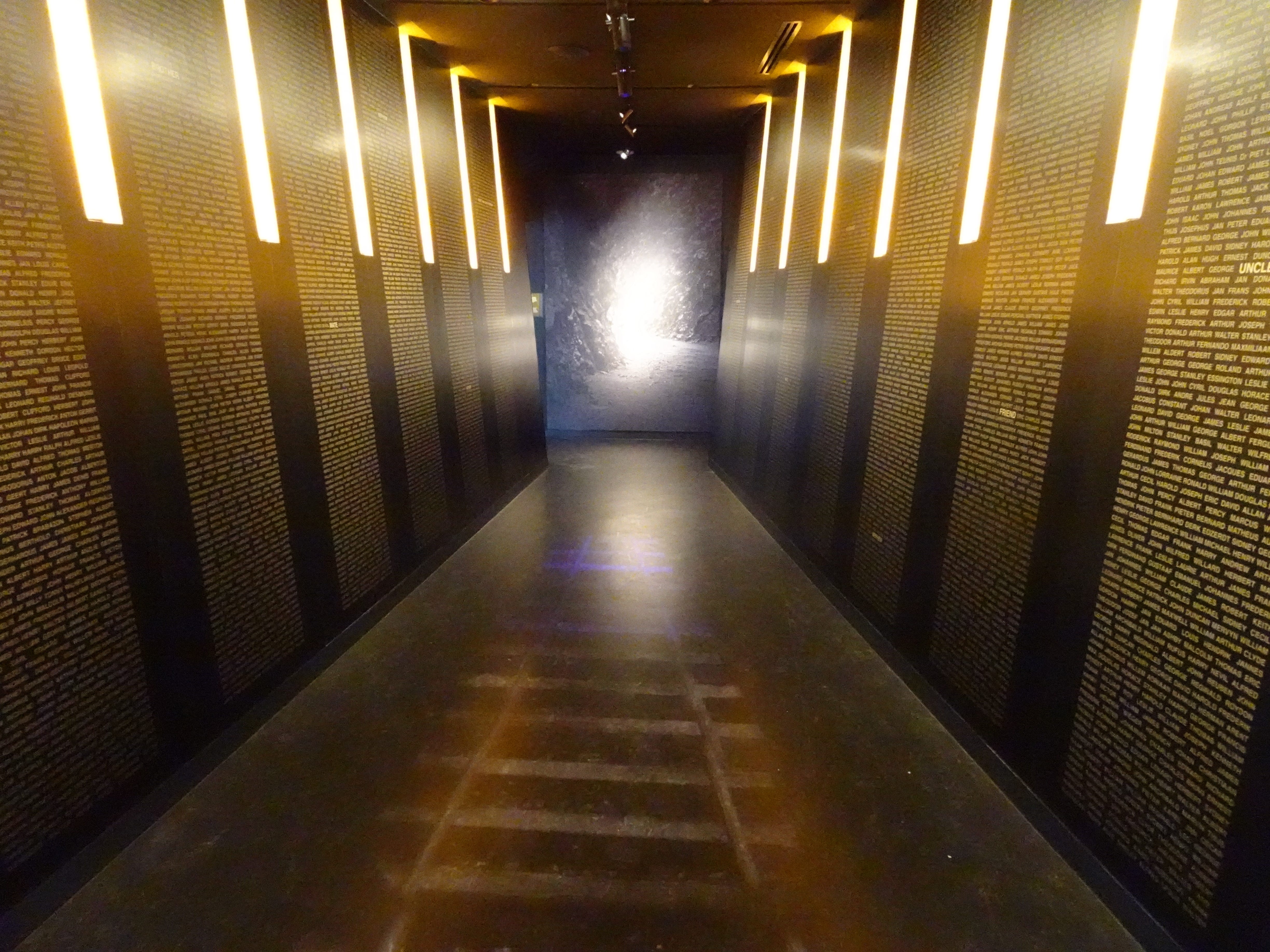

The signs at each exhibition are written in English and Thai. The centre is managed by the Office of Australian War Graves, under the direction of the Australian Department of Veterans’ Affairs, and was opened by Australian Prime Minister John Howard on 24th April 1998.

There is also a viewing platform that extends westwards from the Hellfire Pass Interpretive Centre — it’s a wonderful spot to view the Sai Yok National Park. Directly below the viewing platform, in the jungle, is the Thailand-Burma Railway line.
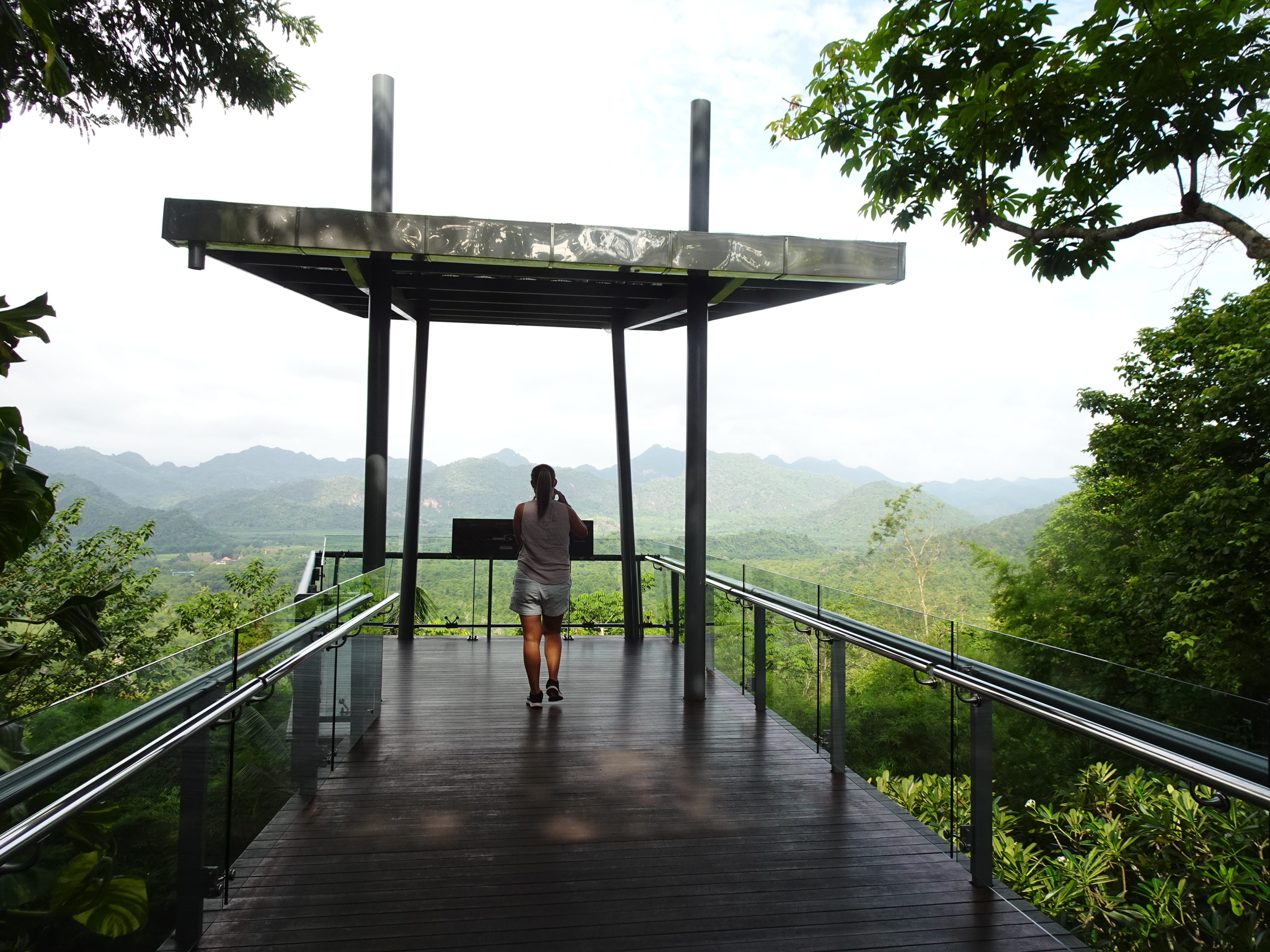

It’s at this point in this article, before you descend down from the Hellfire Pass Interpretive Centre, that you need to known some important things:
1/ Apply insect repellent — there are plenty of insects in the tropical mountain setting
2/ It’s hot and humid — consider bringing a spare shirt — or buy one in the souvenir shop after your walk
3/ The walk down from the Hellfire Pass Interpretive Centre to the rail corridor is steep
4/ The walk along the rail corridor to Hellfire Pass is about 500 metres
5/ The Memorial Walking Trail that continues northwest along the rail corridor after Hellfire Pass is about 3 kilometres long from Hellfire Pass to Hintok
6/ The interpretive centre has audio boxes that can be borrowed for the walk

Before the centre was built, former Australian prisoner Tom Morris visited Thailand in 1984 to find Hellfire Pass. He found it overgrown, and eventually secured funding from the Australian Government for an explorative survey of the former rail corridor. Australian engineer Jim Appleby surveyed the area, and submitted his findings.



Initially, the walking track was cleared for people to access a war memorial at Hellfire Pass — later, through the hard work of people like Ken Bradley a memorial plaque was establish and then the interpretive centre was opened.


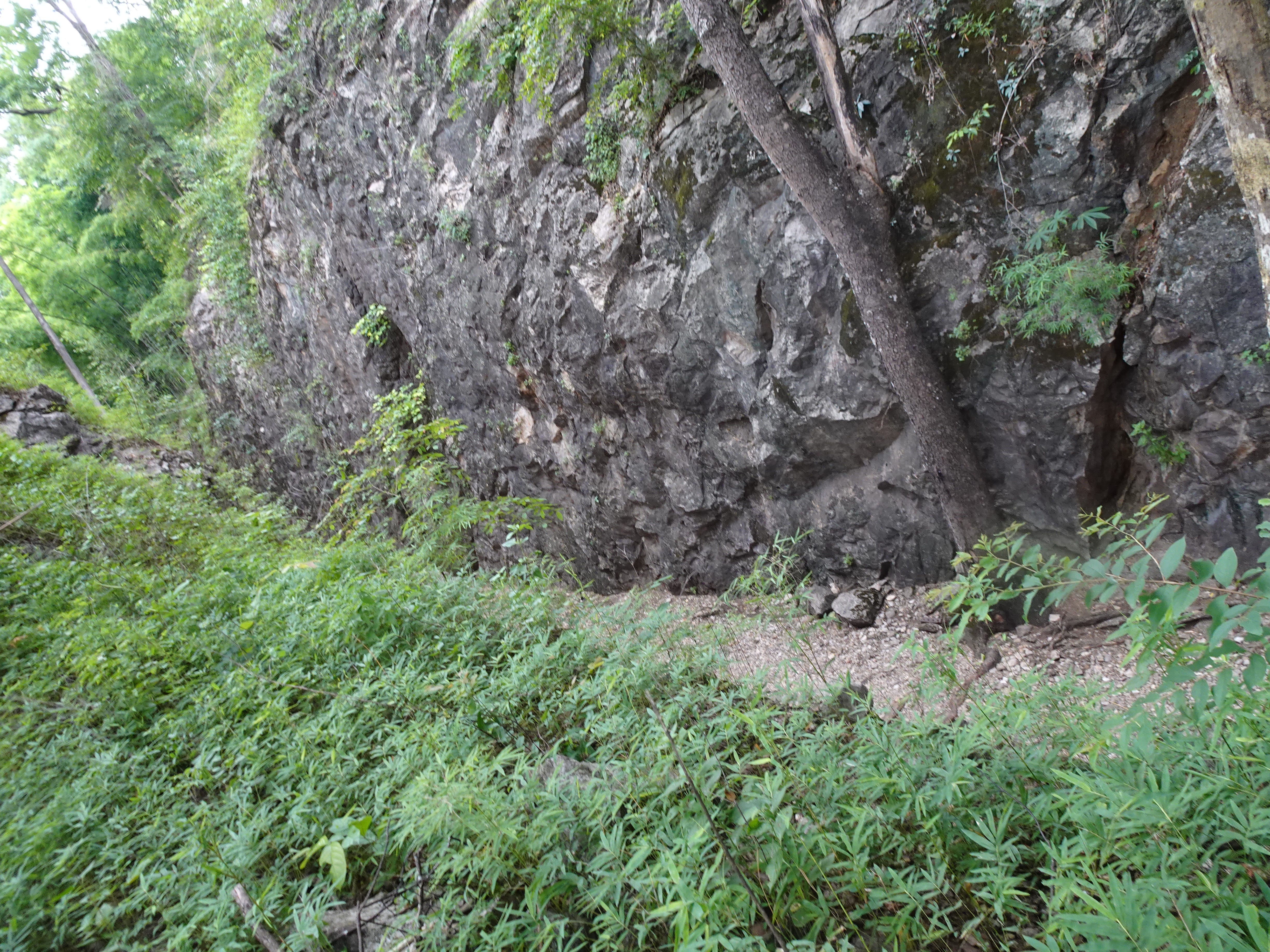
The walk to Hellfire Pass is on a safe settlement of blue metal along the rail corridor.



The Hellfire Pass Memorial was opened in 1987 by the Australian-Thai Chamber of Commerce for the Australian Government.

At Hellfire Pass you’ll come across several important plaques that detail the history of the cutting — located at the northern end is a memorial, shadowed by 5 flag poles.
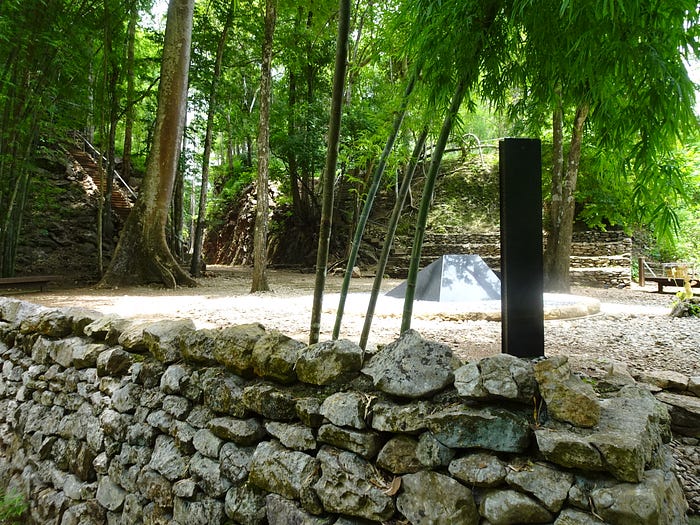
One haunting item that you’ll find at Hellfire Pass is the drilling tool lodged in the rock, titled on a plaque as ‘Broken Compressor Drill.’


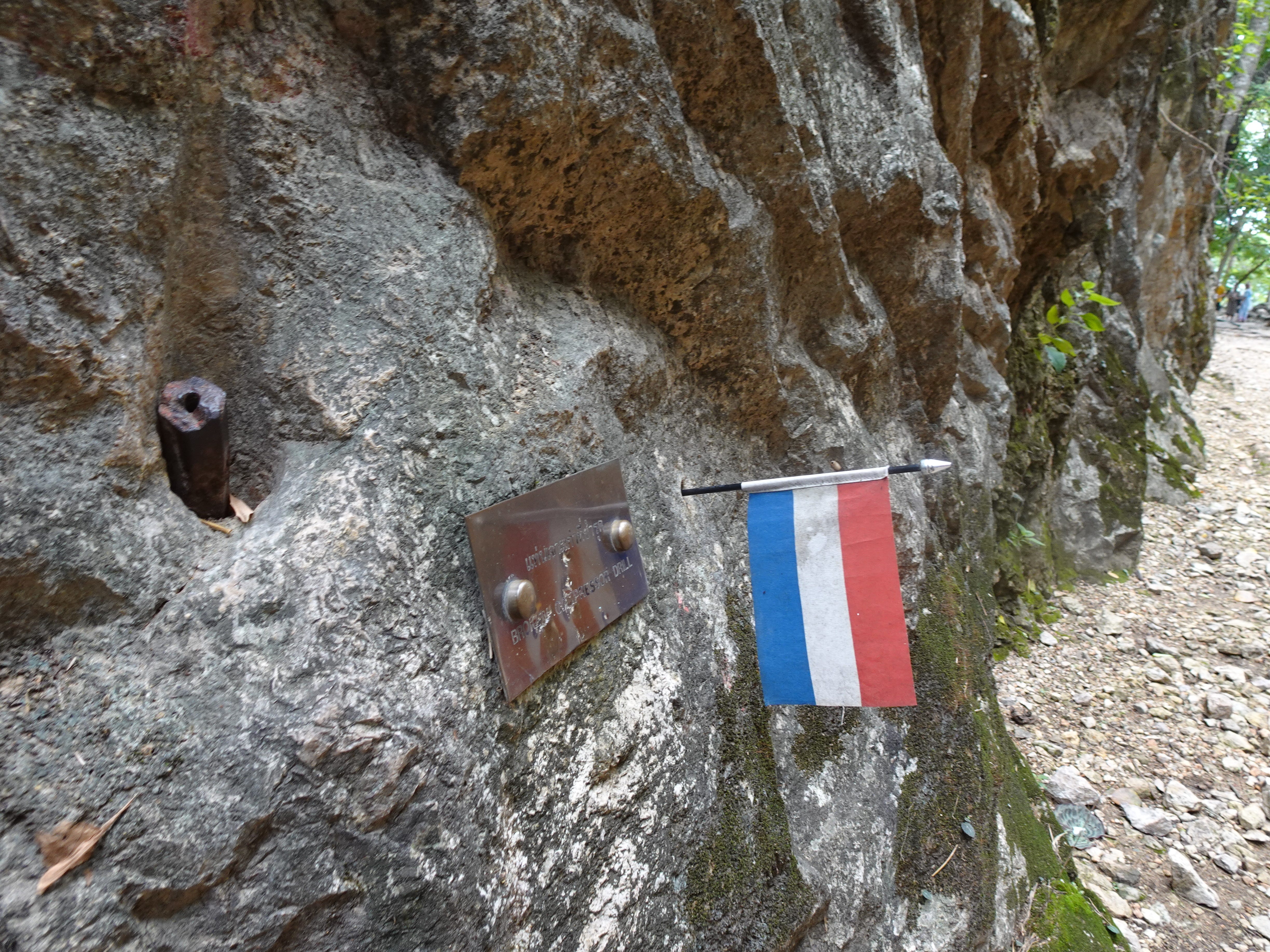
At the Hellfire Pass memorial are two sets of stairs that continue up each side of the cutting — they both offer good raised views of the location. The steps on the eastern side of the cutting continue back to the museum’s carpark — although, on the day that we visited these steps were closed at about the 100 metre point.

Beyond the Hellfire Pass memorial location, the former rail line obviously continued northwest to Burma (now know as Myanmar). Near the flags is where a rail bridge once stood.



The Memorial Walking Trail continues for several kilometres northwest beyond Hellfire Pass — most people don’t walk beyond this point. The Memorial Walking Trail was opened in April 1996 and is well sign posted.

If you have the time, and energy, the walk to the Hintok Cutting and Hintok Road is rewarding — you will fully appreciate the tough environment that the prisoners of war and forced labourers had to operate in.



The three bridges located along the walk have been removed — you’ll be walking along the same steps into and out of the embankments that the POWs worked on.



Along this walk, I counted 4 additional rail cuttings that were created through the hilly rock.
Photos of the Hellfire Pass Memorial Walking Trail













Beyond Hintok Road, the rail corridor is overgrown. And, much further beyond this point, the rail line is now under water after the Vajiralongkorn Dam (Khao Leam Dam) was completed in 1985. The dam now covers 40km of the original Thailand-Burma Railway.

The walk back from Hintok Road to the interpretive centre is just as rewarding. The humidity drenched my shirt — but I was able to buy a souvenir shirt at the shop upstairs at the Hellfire Pass Interpretive Centre.



Near the carpark you’ll find several establishments selling food.



A time capsule was buried near the entry to Hellfire Pass Interpretive Centre on ANZAC Day 25th April 1998. The time capsule was sealed by the Australian Minister for Veterans’ Affairs Bruce Scott.

Hintok River Camp
Inside the Hellfire Pass Interpretive Centre I saw a reference to a prison of war camp at Hintok.
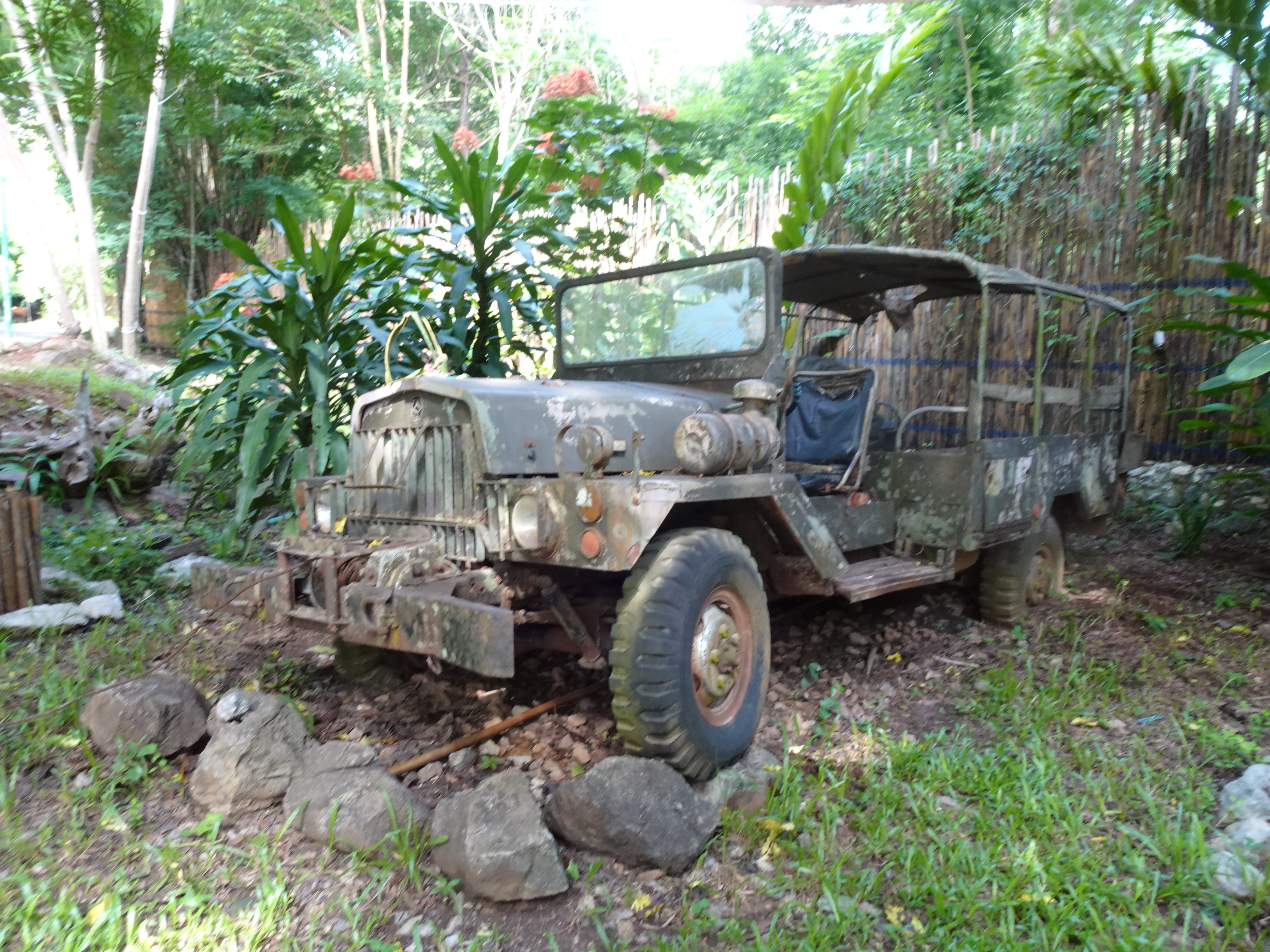

After we visited Hellfire Pass, we checked out Google Maps, and drove to a facility called ‘Hinktok River Camp’. Here we found a top-level resort and a POW/Stone Age museum — located next to the front reception.

“From July to September 1943 Hintok River Camp was a British PoW (Prisoners of War) camp of 300 of whom 79 died” — Hintok River Camp at Hellfire Pass website.

The Hintok River Camp is located about 10 minutes drive from the Hellfire Pass Interpretive Centre. Or, a 10 minute walk south from the Hintok Road exit of the Hellfire Pass Memorial Walk.


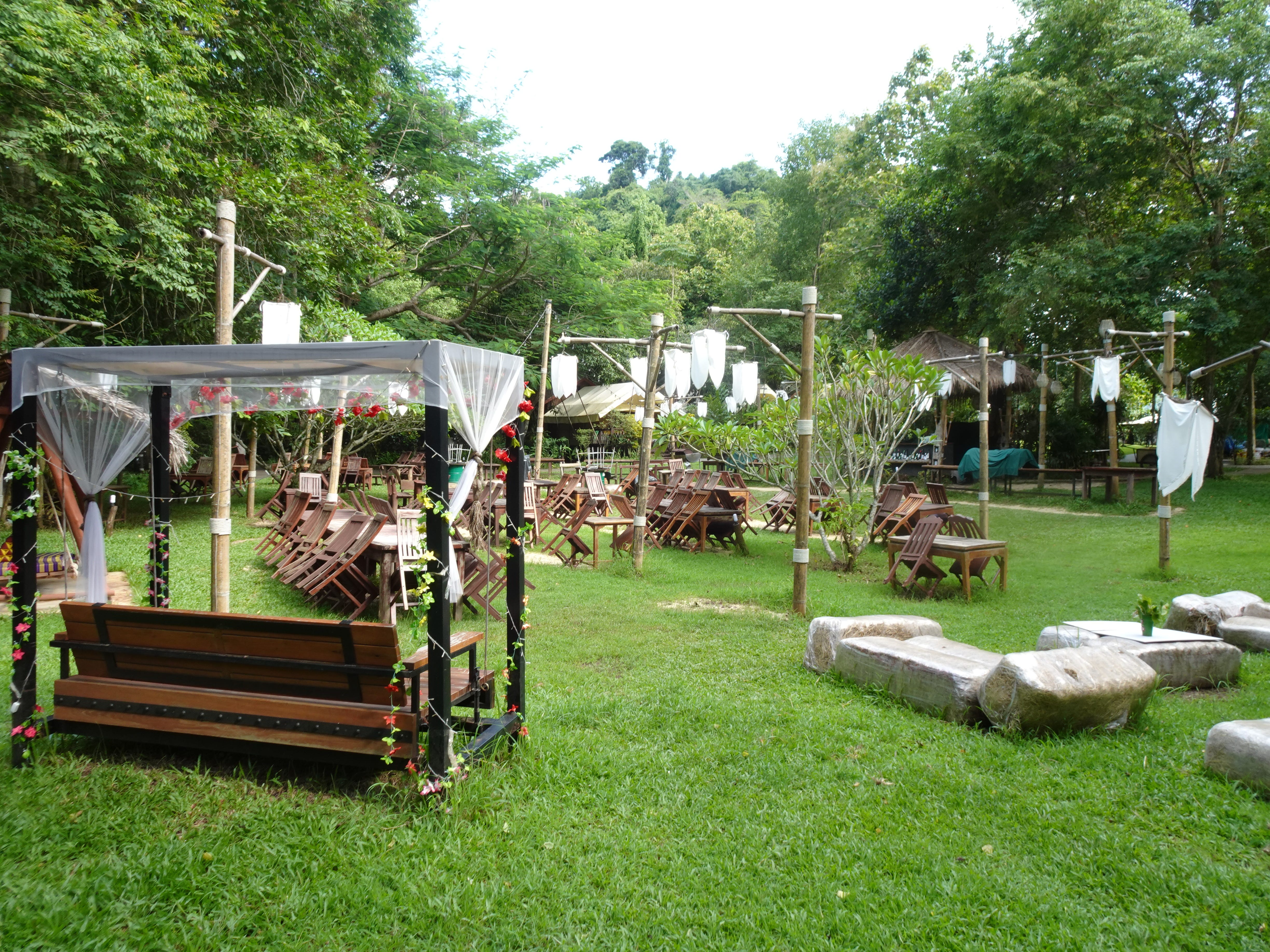
Visiting world famous Tham Krasae rail bridge
While you’re in this area of the Thailand-Burma Railway line, stop by the icon Tham Krasae rail bridge.

It was built in 17 days in 1943, and is the longest railway bridge in Thailand.
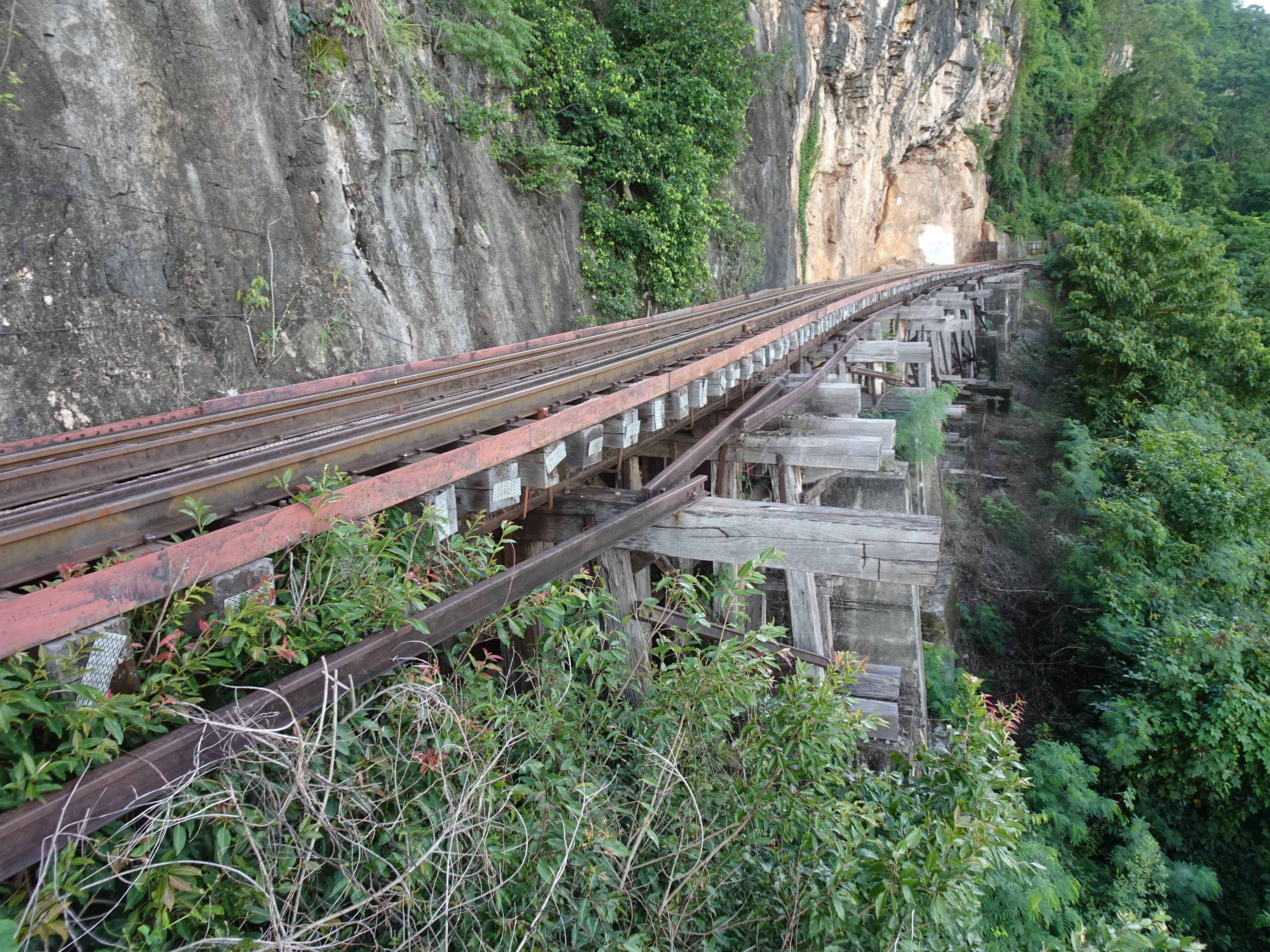


The weekend excursion train and the ‘ordinary’ rail service still travel (slowly) over this part of the Death Railway.
Food and accommodation recommendation
On the drive back to Kanchanaburi, we stumbled upon the region’s best restaurant and cafe. It’s located about 10 minutes outside of Kanchanaburi. Keeree Mantra has excellent views, is modern and the rear cafe overlooks a well-lit farm. They serve excellent Thai and western meals.



We booked into a hotel that overlooked the River Kwai Bridge. It has excellent views of the bridge and river. And was centrally located. Room rates are excellent — and we learnt afterwards that if you book directly with the hotel, the prices are 30% cheaper than if you book via an international online booking company. The hotel we stayed at was the River Kwai View Hotel. There are also other nice hotels located along the river that offer great facilities and service.

The rail trip from Kanchanaburi to Bangkok.



We caught the ‘ordinary’ train service from Kanchanaburi to Bangkok. It’s a crazy ride. No bookings required — and no seating class system nor air conditioning.

It’s a three hour ride. Buy your ticket from the train guards on board the train. It’s a hot and dusty journey.

The rail trip added to our whole historical experience of Thailand’s Death Railway.

I hope you enjoy your trip to this part of Thailand.
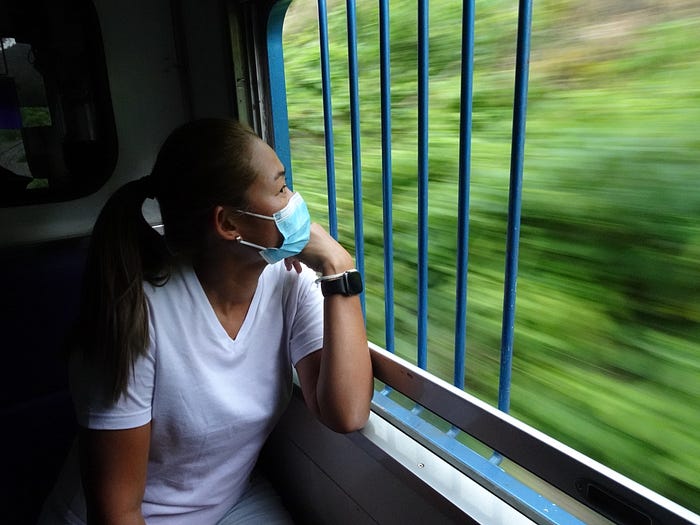
#ThailandBurmaRailway #WorldWarII #Thailand
